In Part 6b of this series on revelation we will closely examine the evolution of the LDS temple worship. If you have not read Part 1 of this revelation series, I highly recommend that you do so before reading this post (you can read it here). And if you haven’t read Part 6a of the Temple portion of this series, click here to read it before you continue. The point of the posts in the revelation series is to show how culture, bias, and worldview affect the way revelation or inspiration is interpreted. We will pick up on the timeline in the Brigham Young era (Brigham Young worked really hard to format the endowment).
Most of the information I present here is from a well-written book, “The Mysteries of Godliness, A History of Mormon Temple Worship,” by David John Buerger. I highly recommend it! Unless otherwise noted, all references come from his book.
We ended the last post with the assassination of Joseph Smith in June of 1844. As a time reference the endowment was first introduced by Joseph Smith in May 1842.
November 1845 – Work began by Brigham Young to format and organize the endowment, including division of rooms and decor such as trees and cedars for the garden room (pg 71).
13 December 1845 – After about three days straight of doing member endowments (for the first time since Joseph Smith’s death), Church leaders met to discuss better order in conducting the endowment. The creation story was drawn out in more detail. Eve was introduced which enabled the story of the fall (pg 80).
21 December 1845 – George A. Smith reinforced that garments were seen as a form of protection and that they should be worn “continually by night and by day, in prison or free.” Perhaps this was due to the fact that Joseph and Hyrum Smith were not wearing their garments when they were killed in Carthage Jail, but Willard Richards wore his and escaped unscathed. Many other survival stories emerged and thanks were given to the protection of the garments (pg 146).
Additionally, over 500 members had received their endowments at this time.
7 January 1846 – An altar was installed with room for kneeling around it (pg 86).
8 January 1846 – The fullness of the priesthood or second anointing was administered for the first time in the temple (it wasn’t administered in the temple before). A few individuals were sealed to their current husbands for time and also as queens to deceased men (usually Joseph Smith) for eternity. Several polygamous second anointing sealings were also performed (pg 86).
May 1846 – The saints headed west to the Rocky Mountains. Apart from prayer circles, temple work was put on hold (pg 97).
1846-47 – In Nauvoo, 1,366 Mormon males had been initiated into Masonry (pg 58).
21 July 1849 – Addison Pratt completed his endowment at Ensign Peak (no temple) in the Salt Lake Valley. In October he is called on a mission to the South Pacific (pg 97).
6 April 1853 – The cornerstone of the Salt Lake temple was laid (pg 98).
5 May 1855 – The Endowment House was dedicated for baptisms for the dead, marriage sealings, and endowments (pg 98).
May 1856 – Bishops recommended member names from their congregations to receive their endowments in the temple. Basic things were suggested that members do in order to get a recommendation: pay tithing from year to year, pray in their families, not speak against the authorities of the Church, not steal, attend meetings, etc. Before members entered the temple, they were instructed to wash themselves in pure water and to take with them their temple clothes, oil, and food to feed those that administered to them (pg 99). This is where we get the term “temple recommend”.
Mid-1860s – Brigham Young advised that members be clean and pure when they went to get their endowments: “…a woman should not go for a week after her menses were upon her, a man should not have intercourse with his wife for several days, but should be clean in body and exercised in spirit previous thereto…” (pg 100).
January 1867 – Second anointings resumed after a decade; the reason for the pause is unknown. Second anointings were the only vicarious ordinance wherein a living proxy was not required (pg 101).
Late 1876 – The endowment house was shut down. Brigham Young instructed those wanting the endowment to go to the St. George temple (pg 105).
January 1877 – The lower portion of the St. George temple was dedicated (pg 105-106).
11 January 1877 – The first recorded endowments for the dead were performed (pg 108).
14 January 1877 – Brigham Young requested the endowment ceremony committed in written form from beginning to end (pg 110).
1 March 1877 – Wilford Woodruff, the new temple president, spent the day with 154 women (from the ages of 14 to the “aged mother leaning upon her staff”) performing proxy endowments for deceased women who had been or were being sealed to him (pg 109).
21 March 1877 – The completed written form of the endowment included Brigham Young’s Adam-God doctrine (pg 113). The Adam-God doctrine, in short, is the belief that Adam is God.
April 1877 – The St. George Temple was dedicated.
August 1877 – Brigham Young died (pg 105).
15 November 1877 – John Taylor put to vote the reopening of the endowment house for certain ceremonies: sealings for time and not eternity, and personal endowments for those that couldn’t travel to St. George because of age and health (pg 105).
1883– When describing the early garments, John Taylor said they were patterned after the garment given to Adam and Eve in the Garden of Eden, and each part had a sacred meaning. (The following parts of the garment are nonexistent today.) The collar: my yoke is easy and my burden is light. The strings on each side had a double meaning: the strings being long enough to tie in a neat double bow knot, representing the trinity; the double bow knots the marriage covenant between man and wife. (pg 145)
7 October 1889 – President Woodruff told stake presidents to be selective of who received the second anointing, and the First Presidency had the final say (pg 118).
November 1889 – Endowment house is torn down after President Woodruff learns plural marriages being performed there without his permission. (Official Declaration 1)
6 October 1890 – 1890 Manifesto is released by President Woodruff as an official statement which disavowed polygamy. (Official Declaration 1)
1891 – President Woodruff gave authorization for saints that did not live in Utah to dedicate rooms where sealings could be performed (pg 127).
1893 – White is the official color of the garment (source not confirmed).
1893 – The Salt Lake Temple bathtub is mentioned in an engineering magazine for the “largest bath-tub ever made” (Appendix 2).
April 1894 – At General Conference, Wilford Woodruff ended the action of sealing people to general authorities and other church members outside of their families (pg 127).
August 1894 – A letter was sent out from the First Presidency with minor changes in the language of the endowment (i.e. “that my tongue be torn from its roots in my mouth” was changed to “from the roof of my mouth”). Also, the marking of the garment was done in the washing room and not at the veil (pg 128).
October 1894 – The Salt Lake Temple was dedicated.
November 1894 – The church established the Genealogical Society of Utah to awaken the interest in systematic work for dead lineal ancestors.
1877-1898 – Living endowments totaled 38,317; endowments for the dead totaled 486,198. There were four temples. Second anointings for the living equaled 5,213; for the dead, second anointings equaled 3,411 (pg 131).
1901 – President Lorenzo Snow stated the following: “…persons who are recommended for second anointings should be those who have made an exceptional record, that they are persons who will never apostatize.” Guidelines set up included a recommended age. Also, if you committed adultery and repented of the sin in full, you were still disqualified.
1902 – The First Presidency issued another set of instructions regarding admission to the temple and other regulations. I’ll mention some that stood out to me:
- Deceased females reaching the age of 10 in life could be sealed to man as his wife. Same rule applied for males.
- Males must have the Melchizedek Priesthood before receiving their endowments.
- Males under 21 and females under 18 could be baptized for their health or for the dead.
- If you married outside of the church, male or female, you were not permitted in the temple. Living children could receive their endowments at age 12 if they were mature, if not, age 15. Children who died under the age of eight, not born in the covenant, should receive no other temple ordinances other than being sealed to their parents.
- When the husband died and the wife remarried another man, because she was sealed to the dead man, all the children from the second marriage were sealed to the first (deceased) man.
- The second anointing could only be received by a special recommend signed by the Stake President and endorsed by the President of the Church.
1903 – Reed Smoot, an Apostle, was elected by the Utah legislature in 1903 to represent Utah in the U.S. Senate (Salt Lake Tribune).
14 December 1904 – The Washington Times and the New York Herald featured front-page photographs of a man in endowment clothing depicting the signs and penalties (pg 133-134).
1904 – Hearings of a U.S. Senate subcommittee to determine whether or not Reed Smoot should be seated in the U.S. Senate began. The committee was concerned with where Smoot’s loyalty really lay – with the church’s “secret oaths” or with the Constitution. One oath in specific that attracted the committee’s sustained interest was the oath or prayer of vengeance, which read: “You and each of you do covenant and promise that you will pray, and never cease to pray, Almighty God to avenge the blood of the prophets upon this nation, and that you will teach the same to your children and your children’s children unto the third and fourth generations” (pg 133).
1906 – Joseph F. Smith characterized any attempt, in the name of changing fashion trends, to modify the 1840s garment pattern, which he characterized as “sacred, unchanged, and unaltered from the very pattern in which God gave them” as a “grievous sin.” (“Editor’s Table”, Improvement Era 9)
1912 – The oath or prayer of vengeance was deemphasized due to negative publicity from the Smoot Hearings. It was then taught that God, not the people, would avenge his prophet (pg 135).
1916 – President Joseph F. Smith emphasized the heavenly origin of the garment.
“The Saints should know that the pattern of endowment garments was revealed from heaven, and the blessings promised in connection with wearing them will not be realized if any unauthorized change is made in their form or in the manner of wearing them” (pg 150).
1920 – The first night sessions started (pg 141).
7 April 1921 – The temple choir was no longer to be a part of the endowment and was disorganized (pg 136).
1921 – A committee was formed to simplify and shorten the ceremonies, including the prayer circle and at the veil. It was called the Richards Committee because it was headed up by George F. Richards, Salt Lake Temple President (pg 136).
June 1923 – President Heber J. Grant issued a letter regarding garment modifications: sleeves could end at the elbow; legs could be shortened to just below the knee; buttons could be used instead of strings; the collar was eliminated. More changes were made in the same year that shortened the sleeves and legs even more; it also eliminated buttons (pg 150).
President Charles W. Penrose of the First Presidency explained some of the reasoning behind changes to the garment, which included (pg 152-153):
- Freedom of movement
- Cleanliness
- Practicality (hard to do housework for women since they were always rolling up their sleeves)
- Elimination of undesirable exposure of the garment which frequently occurred through the wearing of present-day patterns of clothing.
June 4, 1923 – An article appeared in the Salt Lake Tribune that captured the members’ thoughts about the change in the garment. The younger generation welcomed the change. Some longstanding members saw it as a progressive move intended to add to personal comfort. The older original pioneers clung to the old design because they saw it as a safeguard against disease and bodily harm. The old style was still required to be used in the temple (pg 151-154).
Next week will bring the timeline to present day.

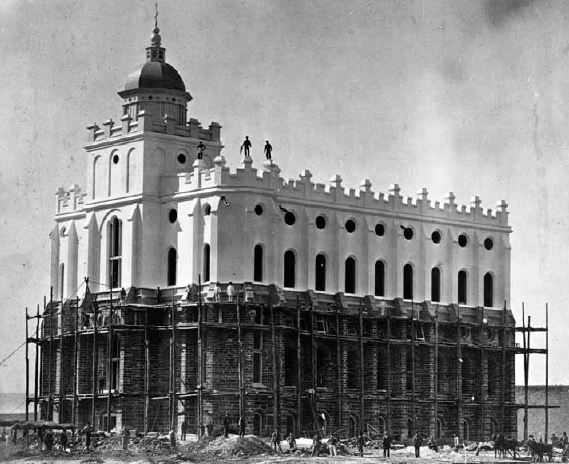
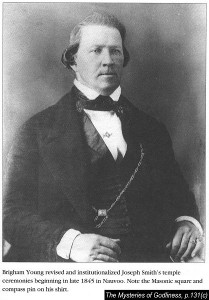
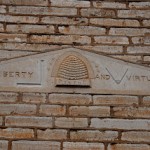
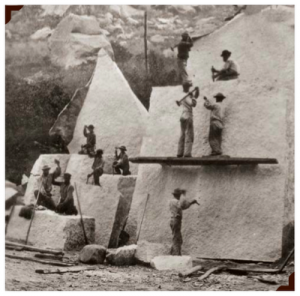
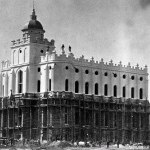
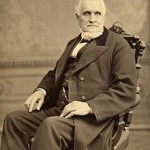
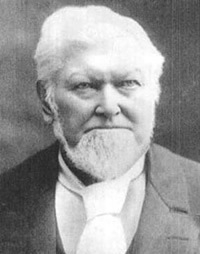
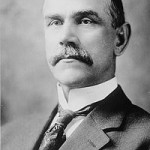
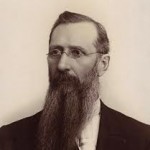
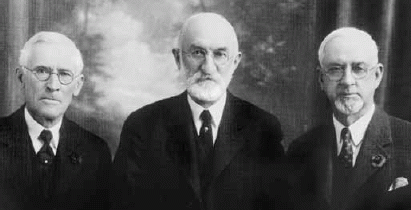



Couple questions:
First the easy ones: when and why was the temple choir formed? Was it only in one temple or in all of them?
2) What was the SL temple used for if not for administration of ordinances? Church administration building?
3)What constitutes a night session?
4)How did the leaders go from teaching the garments were “sacred, unchanged, and unaltered from the very pattern in which God gave them” and altering them was a “grievous sin” to changing them less than 20 years? The article quoted lets us know the different opinions of the members, but not how the changes went from being a sin to ok.
1. I couldn’t really find anything when it was actually formed.
2. I don’t understand your question
3. Night session = at night, when the sunsets
4. Well.. there lies a big question! In this series we try to address the human touch in anything that is revealed from God. The question one must ask themselves is how much the human touch is involved and how much is God’s will. Is everything revealed at once? I don’t think so. To say something should never be changed really paints yourself into a corner.
Great post and new look. I’ve been wanting to read that book. I’m enjoying this cliff notes version. I have to admit, I think JFS is the main cause of the retention troubles the church is having today. His overly dogmatic, black and white view removed all nuance from the church which has made the modern view of the gospel not fit with the original. These quotes were great:
1883- When describing the early garments, John Taylor said they were patterned after the garment given to Adam and Eve in the Garden of Eden, and each part had a sacred meaning. (The following parts of the garment are nonexistent today.) The collar: my yoke is easy and my burden is light. The strings on each side had a double meaning: the strings being long enough to tie in a neat double bow knot, representing the trinity; the double bow knots the marriage covenant between man and wife. (pg 145)
1906 – Joseph F. Smith characterized any attempt, in the name of changing fashion trends, to modify the 1840s garment pattern, which he characterized as “sacred, unchanged, and unaltered from the very pattern in which God gave them” as a “grievous sin.” (“Editor’s Table”, Improvement Era 9
Carson – it is a great book and a quick very interesting read. The next post is really interesting when they bring in the video.
Yes, one should not be so cemented in, makes it that much harder for change to occur and to help others keep an open mind to change. Thanks again for stopping by!
Paul Barker,
Wish I could respond to both you and Carson.
Re 2 – “15 November 1877 – John Taylor put to vote the reopening of the endowment house for certain ceremonies: sealings for time and not eternity, and personal endowments for those that couldn’t travel to St. George because of age and health (pg 105).”
If it was re-opened for certain ceremonies, that means it was closed to them before. Where they doing all the ceremonies they currently perform? and wanted to reopen it to time sealings (shouldn’t these just be called weddings? “Sealing” I thought inherently carries the eternal significance.) and for endowments. So basically they were just performing sealings there?
4)To say that revelation is 100% pure is folly. To say that everything is revealed at once can’t be true; look at everything that happened post 1820, post 1830, post Kirkland and even post Nauvoo and SL. It just doesn’t come all at once; it can’t. Either we don’t have the capacity to understand it, the filter is too dirty, whatever the case is, it just doesn’t happen. Because of that, I think as well as the human touch, things
willmust change.Carson, I hope you see this as well; that point is genius. It goes right along with what Paul pointed out and points out more that sometimes the leaders are fallible, change and have different/conflicting opinions, insights and thoughts of things.
BY told them to go to St. George to get their endowments in the temple. So John Taylor opened it back up to do the endowment so peeps didn’t have to travel so far.
Jon, as I believe you guys did, I had to come to that understanding or walk away. Luckily there is a logical understanding that allows for people like JFS and BRM to say some of the things they did, yet allow me to think they were wrong. Something along the lines of a faith that is rational 😉
Because we believe in modern prophets and continued revelation we should expect practices and proceedures to change. But a past prophet might be completely correct in his day and time even though a current prophet has moved the position of the church. I try to give the past prophets respect and consideration for the people and times they delt with and follow our current prophets without trying to tie them down to the past. Some see it as a cop-out but I see it as a wonderful blessing that God would consider the needs of his children in the times they live in.
Jeff –
Exactly. You framed it very well and I don’t think it is a cop-out by any means.
jeff,
Jeff I agree with you, but the leaders have to realize that just as they change things from the past, some things that they do or endorse might be changed in the future and should therefore anticipate those things. Saying things like blacks will never recieve the priesthood (McConkie) or that you should never change/alter the garment and they never have been since Adam (JFS) doesn’t lend itself to the doctrine of living prophets and changing religion.